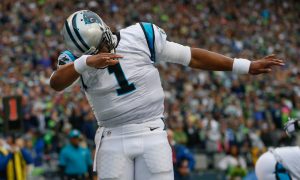SPOILER ALERT: The results of the Australian Grand Prix will be discussed (albeit briefly). Please do not read ahead if you have yet to watch it.
If you watched this season’s opening race, the Australian Grand Prix, you’ll remember that two of the top ten finishers were college-aged. McLaren-Mercedes’s Kevin Magnussen finished in second place, thanks to Red Bull Racing driver Daniel Riccardo’s disqualification. Daniil Kvyat, who races for Toro Rosso, finished in ninth place.
Magnussen is 21. Kyvat, unbelievably, is 19. They’re our age and already at the pinnacle of their field.
Formula 1, for those of you who do not follow it, is watched by around 530 million people every Sunday there is a race. (For some context, the 2010 U.S. Census placed the American population at around 308 million people.)
Formula 1 isn’t like discovering Gisele Bundchen in a McDonald’s. The amount of technical virtuosity (yes, good driving is art) required is immense. The average Formula 1 car is capable—easily—of speeds over 200 MPH. The drivers are battling immense g-forces and the reaction times that were likened to an “assault” by Top Gear UK host Richard Hammond. The clutching is complicated. The acceleration is obscene. F1 cars are monstrous in their capabilities, their power, and the talent required to command them. To get an idea of what it’s like to drive one as a non-racer, watch this Top Gear video (starring the Hamster):
[youtube id=”EGUZJVY-sHo” width=”600″ height=”350″]
As you can see from the video, F1 takes tons of skill. Formula 1 drivers don’t start off driving these F1 race cars to podium finishes, living in Monaco, dating Pussycat Doll Nicole Scherzinger, or driving Maseratis and Porsches on their days off. Like author Malcolm Gladwell says in his book Outliers, it requires something like 10,000 hours. You start when you’re 4 or 5 years old, by racing go-karts.
Your parents foot the bill, and it isn’t cheap. A kart costs about as much as the average person (in a first-world country) makes in a month. From the kart to its transportation to upkeep to racing entrance fees, it requires a huge amount of financial commitment. Mercedes’s Lewis Hamilton’s dad worked up to three jobs at any given time to pay for his passage to F1.
Once you’ve spent money karting, and provided you’re good enough, you will begin to move up through the different formulas. You start at Tier 5, the lowest rung on the ladder. If you win at each step, you’ll keep moving up. But even at the higher Formulas, there is no money. You either need to secure corporate sponsorships or foot the bill yourself. Many racing drivers have “bought their way in,” through parents who are themselves are former race car drivers or simply millionaires.
Back to our young heroes: Magnussen’s father raced in Formula 1 and also won the Le Mans GT class four times. Magnussen Jr. began with karts, graduated to Formula Ford in Denmark, and, by what would have been his sophomore year in high school, he was already top dog in that area. He was signed to the McLaren Young Driver program, the same program as Hamilton, when we were applying to college.
Clearly, college wasn’t Magnussen’s next step. Almost all of these F1 drivers are just high-school educated, if even. Ayrton Senna, the legendary Brazilian driver who died at Imola in 1994, initially enrolled in a college but dropped out. The closest college athletics gets to F1 is the University of Michigan’s Formula SAE racing team.
F1 drivers also don’t look like Michael Phelps or Tom Brady. They’re closer in shape to David Beckham, but, even then, they’re more horse jockey than H&M underwear model. While they aren’t athletes as we understand them, F1 drivers are in incredible shape. They’re like this both to keep car weight down (and thus go faster) as well as to be able to maneuver the car under the incredible g-forces. They all have their own respective methods of staying in shape. The coolest? Scuderia Ferrari’s Fernando Alonso tried to buy the Spanish cycling team Euskaltel-Euskadi because he enjoys cycling so much. The deal fell through, but it was an awesome ambition.
I can’t stress it enough though—until you are sitting in the F1 car on the starting grid as the clock counts down, you haven’t made it. All of these steps require immense amounts of money, which means that F1 is full of drivers who have paid their way in by priviledge. Max Chilton’s dad more or less bought his way in (even though he denies it), Pastor Maldonado is sponsored by the Venezuelan state oil company PDVSA, and for those of you who saw last year’s Rush, Niki Lauda did, too.
And that’s just the beginning! F1 is really all politics and connections. In order to actually succeed, you have to know the right people, you have to drive the best car, and, mostly, you have to be best friends with Bernie Ecclestone (a whole other article for the future).
Photo: Infiniti via Flickr, Ryan Bayona via Flickr







What is the REAL competition in this sport? Is it technology or driver’s skill?